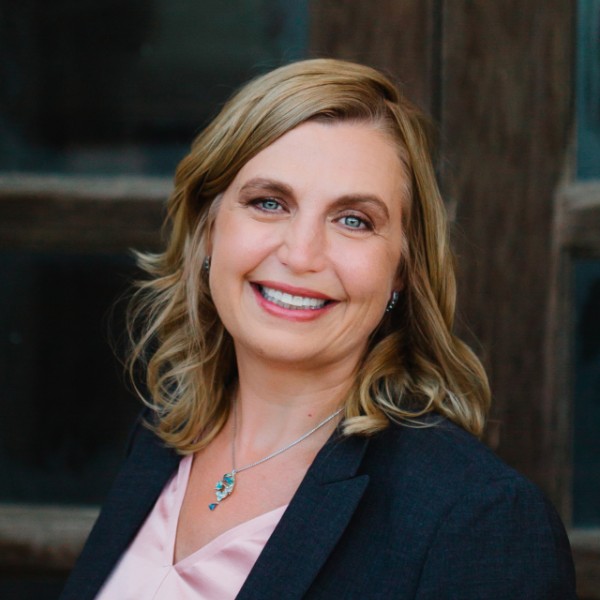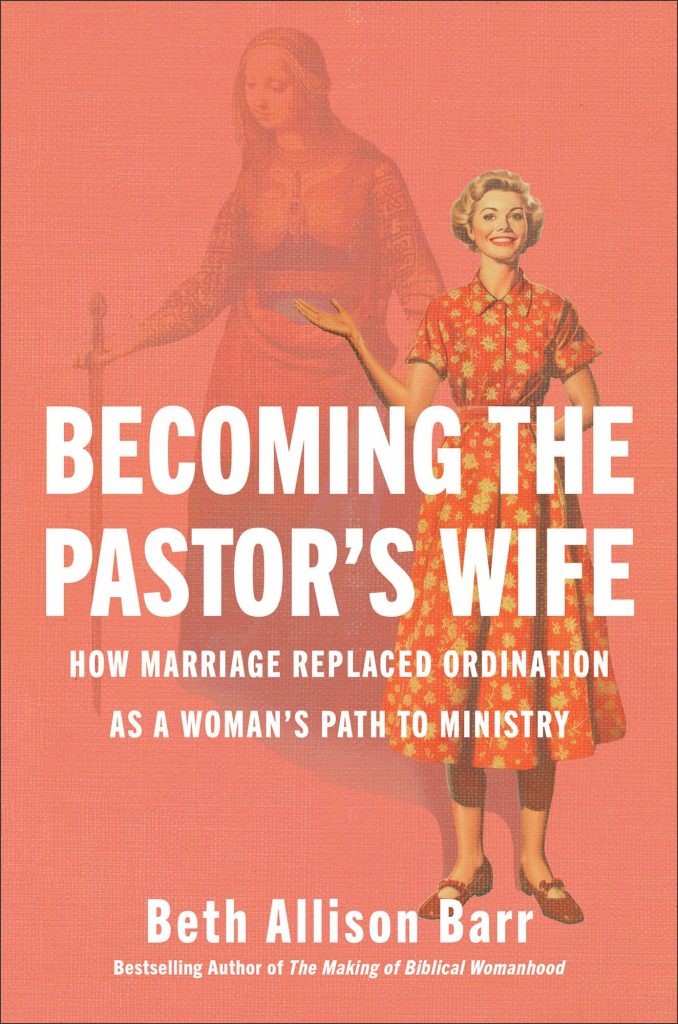One might expect that after decades of being ordained, female clergy would have achieved parity with their male peers.
But Manuela Casti Yeagley, the lead researcher of a study of early-career clergy, says that’s not the case.
“In work, salary, types of appointments -- these are all areas in which women generally lag behind men,” she said. “Women across the board are less represented at higher levels of leadership.”
The study in the Flourishing in Ministry project follows 120 clergy in the early stages of their ministry careers in three denominations: the PCUSA, the ELCA and the Episcopal Church. With a goal of understanding women’s experiences in learning how to be pastors, the study intentionally targets denominations that began ordaining women decades ago.
“You would expect that after four or five decades, things would have become more equal, or less problematic to some extent,” Casti Yeagley said. “But around half to two-thirds of our sample experienced different forms of sexism, be that implicitly or explicitly. This has been very consistent -- and unfortunately, not a surprise.”

According to recent studies, still only 11% of Christian congregational leaders are women, she said.
Casti Yeagley, who is a research assistant professor with the Wellbeing at Work/Flourishing in Ministry project, spoke about her research with Faith & Leadership’s Chris Karnadi. The following is an edited transcript.
Faith & Leadership: You use the term “female exemplar of ministry” in your research. What is a female exemplar of ministry?
Manuela Casti Yeagley: Exemplars are people who can embody the role and give a concrete kind of example to other women about the fact that, yes, you can do that, and this is what it looks like.
One of the most consistent findings of our research is that women come to ministry through the presence of female exemplars. Most of the women we interview started thinking about becoming pastors when they met an actual clergywoman.
Our research shows that when it comes to clergy, female exemplars fulfill different functions depending on the generation. Many younger women, for instance, already take the presence of female congregational leaders for granted. It has been normalized, and they don’t need any further legitimation to become pastors. What they do need, however, is to see how it will work for them so they can choose between different career alternatives.
My father was a teacher; I saw what a teacher looked like, and I decided to become a teacher. That’s probably the way it worked for me. If I don’t meet someone in a profession, it’s difficult for me to understand what being that kind of professional concretely means. Younger women look for exemplars that may honestly answer questions about real life as women and pastors.
There are also more older women who are now joining ministry, choosing it as their second career. For most of them, discovering and embracing their calling took literally decades. These women’s journeys are often made more difficult by the fact that they had never met a female pastor, someone who would help them imagine themselves in the role.
Very often, these women have been raised in a context where women were not allowed to be congregational leaders. Women were always in secondary roles that were not necessarily professionally valued, so they mostly saw men as leaders in a legitimate position within the church. They didn’t have the possibility for that kind of pathway and therefore pursued other, more “gender appropriate” options for their careers.
One of the constant refrains that we hear in the experiences of the more mature women is that they struggle with this sense of unworthiness or not being fit, not being suitable for the role, not being enough.
Many of them, even the younger ones, speak about imposter syndrome and how they had to fight against that. Meeting other women and becoming aware that ministry today is made from a very broad range of people, a very diverse range of profiles, helped them see themselves in that role.
F&L: You’ve mentioned this popular thread of imposter syndrome and the psychological impact. Can you talk about the broad impact on women who don’t have enough examples of what it looks like to be a woman clergy member?
MCY: Current data show that only 11% of Christian congregational leaders are women. This lack of women’s representation has an impact that goes well beyond the four walls of our congregations. A 2018 study shows that women’s absence in the pulpit and in leadership roles acts as a form of social learning that perpetuates and legitimizes gender inequality in the wider society.
In other words, women’s lack of representation in the church perpetuates the stereotypes in which women are considered to be unsuitable as leaders in the workplace.
Research shows that girls who have significant interactions with a female church leader have higher levels of self-confidence and significant advantages in terms of educational and career achievement.
These findings are important because they reverse the imagined dynamic that society influences church culture. In fact, according to this study, it’s what we see every week at church that influences how we behave in society and who we see as suitable and not suitable for certain positions.
In ordinary church life, women not being “fit” for church leadership is represented and taught in many subtle but powerful ways. During my interviews, for instance, a number of clergywomen told me about the difficulty of finding clerical clothing that fit them properly. Priestly robes are generally designed for men; they are generally too long or too big for a woman’s body. Yet women still have to wear them when they perform their liturgical duties. It’s almost a metaphor for what being a pastor as a woman feels like -- it’s a robe tailored for men.
More than one of our female interviewees have confessed to us that their church members laugh at them when they wear those robes designed for taller and bigger bodies.
It’s almost like a caricature. It highlights how the church has never completely dealt with the implications of women’s presence as congregational leaders. Adapting that metaphorical ill-fitting robe is mostly women’s burden. And so clergywomen continue to try to find ways to adapt that robe on their own. It is not an easy task.
Clergywomen routinely receive complaints from members who say that their higher-pitched voices bother them and are unsuitable for preaching. And even more frequently, they are made the objects of remarks about their bodies being a distraction for their parishioners. More or less overt forms of sexual harassment are routinely reported. You may think these remarks are rare; they are not.
These are just a few ways that women are constantly made to feel that they are in the wrong place. The cumulative effect of sexism in the church is that it undermines women’s confidence and ability to trust that they belong in leadership roles. Sometimes this search for confidence continues for a long, long time.
F&L: For Christian leaders, what are the implications of this research for church policy, theology or preaching?
MCY: Church organizations have become more vocal about speaking against sexism, but clergywomen often lament that it mostly happens during big organizational gatherings. These women would like to not just have men onstage telling them what sexism is about but to be invited to speak about their experience in very real terms. They wonder to what extent denominational policies may be effective in changing congregations’ culture, because congregations are the place where sexism and gender discrimination ordinarily take place.
So my first recommendation would be to focus on congregational culture, to empower women to speak about what life as a female pastor really looks like.
The second aspect is to reject the myth that liberal, mainline churches don’t have a problem with sexism. In recent times, church organizations have worked hard to denounce gender discrimination, yet at a congregational level, it is still hard to see the results of these efforts.
Recent studies show that mainline parishioners often resist the idea of discussing gender discrimination and sexism in the church because they believe that as members of a progressive Christian denomination, they have no problem in this area. This is clearly not true. There is a marked difference between denominational speech and local practice, and our findings clearly highlight it.
The third and probably most important thing is that only very rarely have women received seminary-level training on how to face sexism. Women tell us all the time that they would have loved to have a class at the seminary level that acknowledged that pastoral ministry is not the same when the pastor is a woman.
We need to take a look at what the reality looks like for women who are just entering ministry, what it means to deal with very concrete situations like being called “baby” or “sweetheart” by a parishioner. How do you react? How do you handle backhanded comments like, “Oh, you’re not bad for a woman” -- or more blatant examples of harassment, as when a man comments about your legs or chest?
I understand that women feel petrified in the moment. They really don’t know how to answer, and sometimes it’s difficult. You need someone who can help you understand how to deal with the ordinary, daily grind of these kinds of incidents.
For many of these women, what’s needed is a curricular, seminary-level course that could help them say, yes, these things exist very concretely, and here are resources on how to deal with them. Opening a space of learning and discussion on these themes at a seminary level would help women consider these incidents not as private issues they have to deal with on their own but as public concerns for which the church takes responsibility openly.












